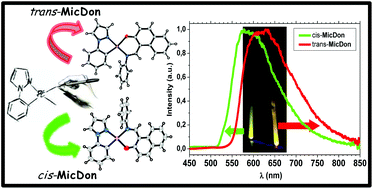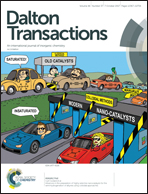Cyclometalated Pt(ii) complexes with a bidentate Schiff-base ligand displaying unexpected cis/trans isomerism: synthesis, structures and electronic properties†
Abstract
Square planar platinum complexes are an important class of compounds used in (nano)technology, optoelectronics, medicinal chemistry and catalysis. The major research interests in cyclometalated Pt(II) complexes focus on the selective modulation of their electronic properties and the control of the (cis/trans) geometry. For the first time, we unveil and demonstrate that cis–trans isomers of Pt(II) complexes can be obtained in a derivative carrying the 1-phenyl-pirazolate (Hppz) and 2-hydroxy-1-naphtyl-(N-phenyl)imine ligands. The two isomers display significant differences in both optical and electronic properties. While luminescence is quenched in solution, they are brightly emissive in the PMMA matrix at room temperature and in the 2MeTHF rigid matrix at 77 K. The phosphorescent emission of the cis isomer, blue-shifted compared to that of the trans one, results from the significantly different trans influence of the ppz ligand. Theoretical investigation highlights the almost isoenergetic potential energy of the two isomers therefore explaining their formation and evidences a large geometry distortion of their triplet state, which should be responsible for the observed luminescence efficiency.



 Please wait while we load your content...
Please wait while we load your content...